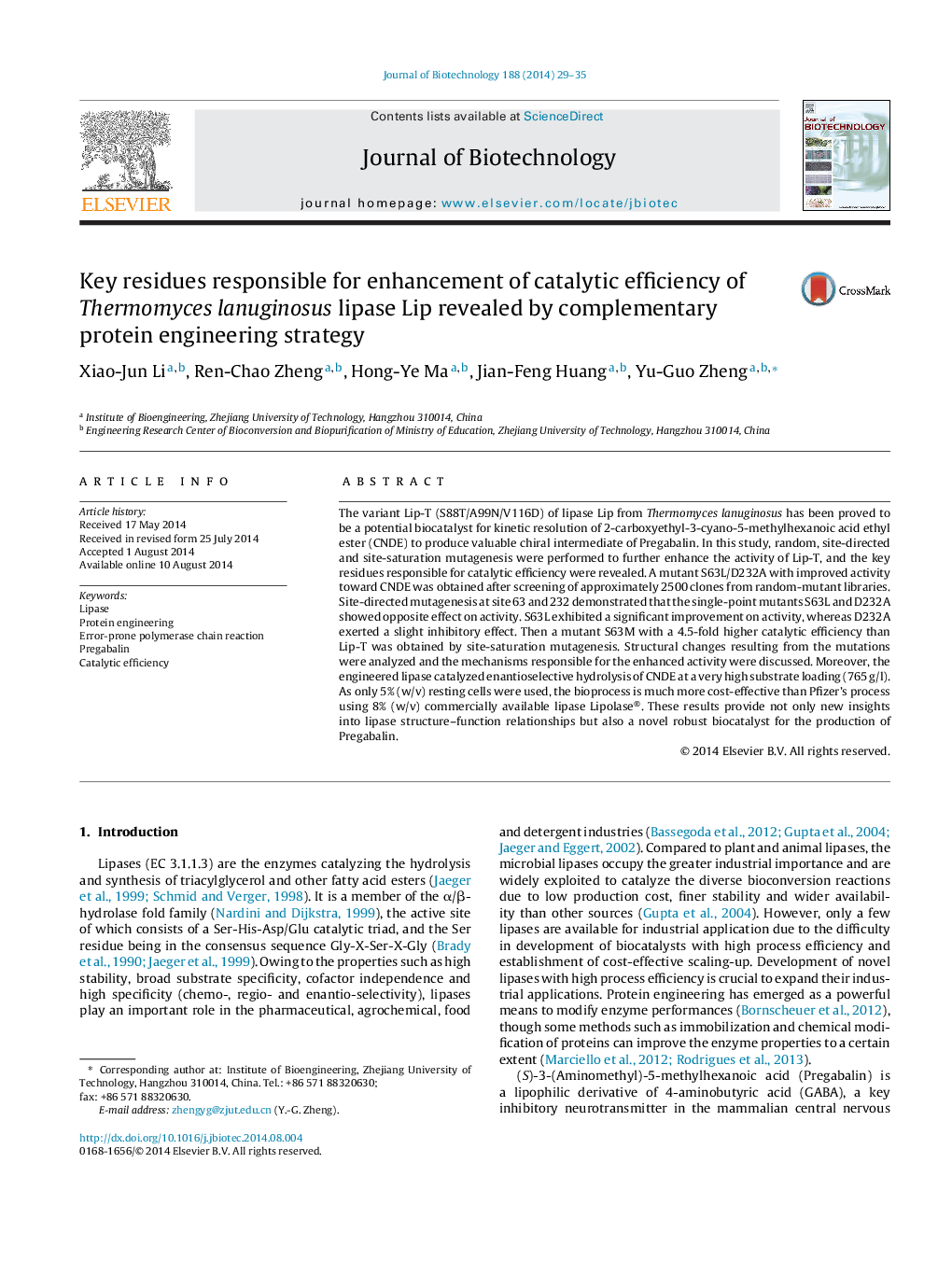| Article ID | Journal | Published Year | Pages | File Type |
|---|---|---|---|---|
| 6491409 | Journal of Biotechnology | 2014 | 7 Pages |
Abstract
The variant Lip-T (S88T/A99N/V116D) of lipase Lip from Thermomyces lanuginosus has been proved to be a potential biocatalyst for kinetic resolution of 2-carboxyethyl-3-cyano-5-methylhexanoic acid ethyl ester (CNDE) to produce valuable chiral intermediate of Pregabalin. In this study, random, site-directed and site-saturation mutagenesis were performed to further enhance the activity of Lip-T, and the key residues responsible for catalytic efficiency were revealed. A mutant S63L/D232A with improved activity toward CNDE was obtained after screening of approximately 2500 clones from random-mutant libraries. Site-directed mutagenesis at site 63 and 232 demonstrated that the single-point mutants S63L and D232A showed opposite effect on activity. S63L exhibited a significant improvement on activity, whereas D232A exerted a slight inhibitory effect. Then a mutant S63M with a 4.5-fold higher catalytic efficiency than Lip-T was obtained by site-saturation mutagenesis. Structural changes resulting from the mutations were analyzed and the mechanisms responsible for the enhanced activity were discussed. Moreover, the engineered lipase catalyzed enantioselective hydrolysis of CNDE at a very high substrate loading (765Â g/l). As only 5% (w/v) resting cells were used, the bioprocess is much more cost-effective than Pfizer's process using 8% (w/v) commercially available lipase Lipolase®. These results provide not only new insights into lipase structure-function relationships but also a novel robust biocatalyst for the production of Pregabalin.
Keywords
Related Topics
Physical Sciences and Engineering
Chemical Engineering
Bioengineering
Authors
Xiao-Jun Li, Ren-Chao Zheng, Hong-Ye Ma, Jian-Feng Huang, Yu-Guo Zheng,
